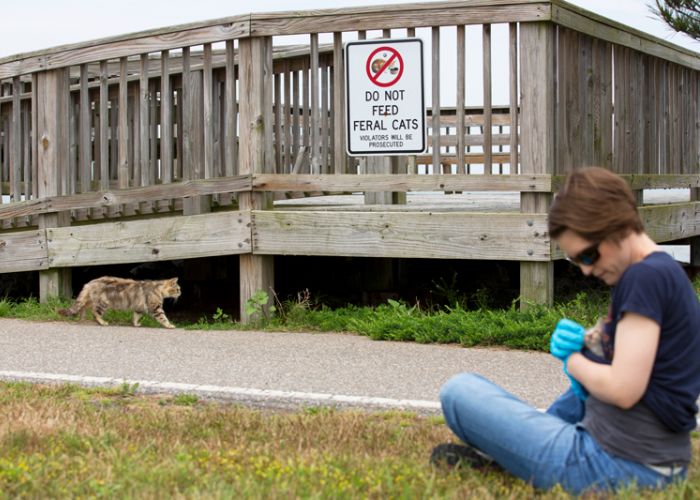Ask the expert: Socializing kittens
Cat behavior expert Tabitha Kucera promotes a gentler way for winning the trust of unsocialized kittens
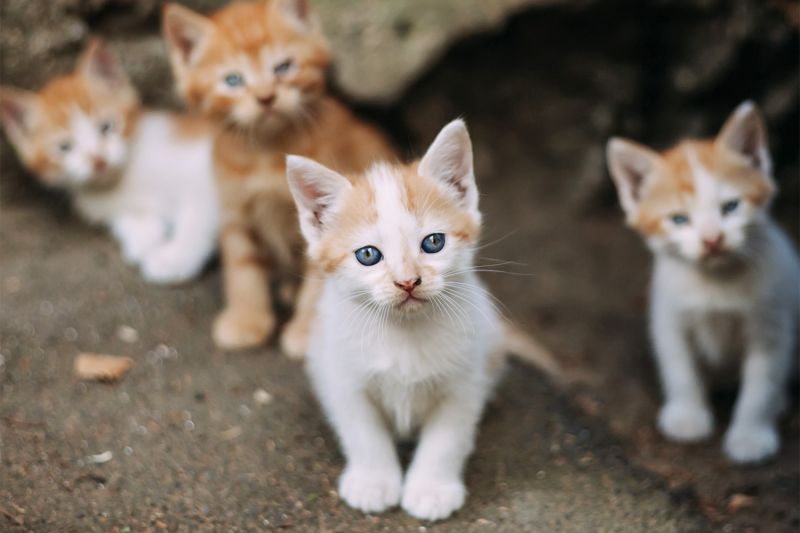
During my early years in rescue, before I learned to set limits, there were times when I had kittens stashed in every available inch of my 800-square-foot rental. It wasn’t as much fun as it sounds.
These were kittens from community cat colonies, tiny spitfires born outside and petrified of people. I trapped them, brought them home, and put them in my bedroom, bathroom and giant crates scattered throughout my home. Then I donned a pair of garden gloves, followed by a second layer of winter mittens (bona fide animal handling gloves were beyond my budget), and took several deep breaths to prepare for what came next.
It often felt like a knock-down-drag-out wrestling match as I grabbed hold of hissing, spitting kittens and wrapped them in towels so all four legs were immobilized. One by one, I’d force the kittens to sit on my lap while I stroked their heads, offered them treats and talked in what I hoped was a soothing voice.

In animal behavior circles, the technique I used is called “flooding”: exposing a person or animal to what they’re afraid of full force, like draping a python around the neck of someone with a snake phobia. It was terrifying for the kittens, and it made me feel like a monster. But at the time, this was the standard advice for turning a feral kitten into an adoptable one, and I followed the protocol for years.
Turns out I was doing it all wrong, right down to the words I used.
“I don’t like the term ‘taming,’” says certified cat behavior consultant Tabitha Kucera. “Taming is like they [merely] tolerate petting. That’s not ideal: When they go into their new home, they live in a basement or under a bed. I meet these caretakers who adopt these cats. I deal with the aftermath.”
Through her Chirrups and Chatter education and consulting business, Kucera teaches shelter staff, rescue volunteers and pet owners low-stress handling and behavior modification techniques for the felines in their care. When it comes to unsocialized kittens, Kucera’s “considerate approach” strategy allows kittens to progress at their own pace and essentially choose to be human companions rather than being strong-armed into the role.
Kucera’s “considerate approach” strategy allows kittens to progress at their own pace and essentially choose to be human companions rather than being strong-armed into the role.
While it requires some patience, Kucera says her methods are ultimately quicker and more effective: “When you socialize appropriately for that kitten, they actually get socialized versus tame.”
In this edited Q&A, Kucera shares her top tips for helping unsocialized kittens voluntarily cross over from the wild side.
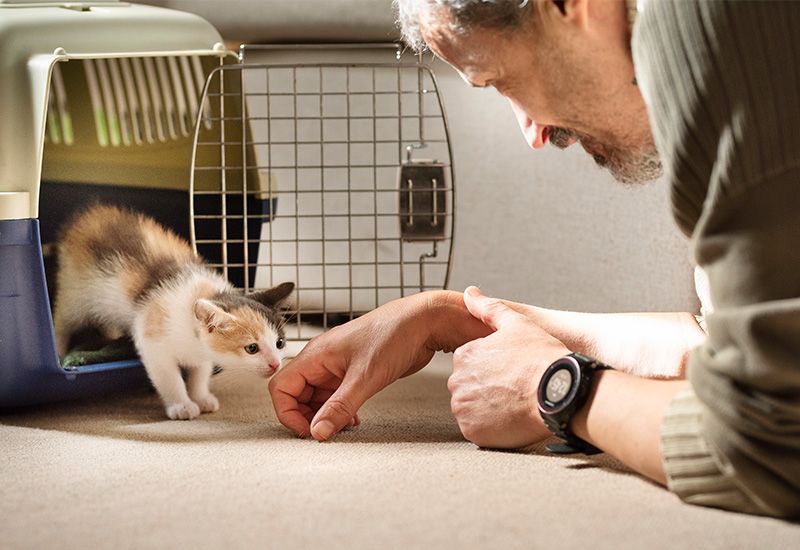
Assuming we’re dealing with unsocialized kittens who are weaned, what’s the ideal housing setup?
First, you want to create a calm environment. These kittens are in a state of fear, and when you’re scared, everything is more intense. Set them up in a room away from other animals. You need to allow them to hide, but not under a dresser or in a wall. A large carrier or box inside an open closet or inside a safe, appropriately sized holding cage can work well.
Create a comfortable, kitten-proofed space with all the resources they need. Give them high places, which can be a cat tree or the top of a carrier, horizontal and vertical scratching surfaces, and heated and unheated cat beds to give them a choice.
With litter boxes, consider the age of the kittens, and keep in mind that the box size should change as they grow. Most kittens have parasites initially, and they’re going to have urgency and need easy access. If you have five kittens, there should be three boxes in there. The first few days, I’ll mix some garden soil with the litter and bring some of the outside in, like safe plants and sticks. It’s scent enrichment and helps transition them to a new place as well.
Use a night light to help limit the need to turn lights on and off. If there’s no natural light in the room, use a timer that provides a predictable light-dark cycle. Do your best to establish a predictable routine by feeding and cleaning litter boxes around the same time each day. I’m also a fan of pheromone sprays and stuffed animals that simulate kittens and mothers purring—basically anything I can do to make them feel safer.
When do you start interacting with them?
I recommend finding high-value reinforcers—foods or treats that most appeal to the individual kitten—and begin “picnicking” right away. At the same time each day, enter the room using considerate approach, leave the treat and exit the room. In this way, you’re creating a positive and consistent interaction with the kitten. The kitten may not eat in front of you at first, and that is OK! As you continue to do this, you’ll notice the kitten eating as you leave, then eating in front of you and eventually coming out to greet you. Once the kitten is comfortable with you being in the room, you can go to the next step.
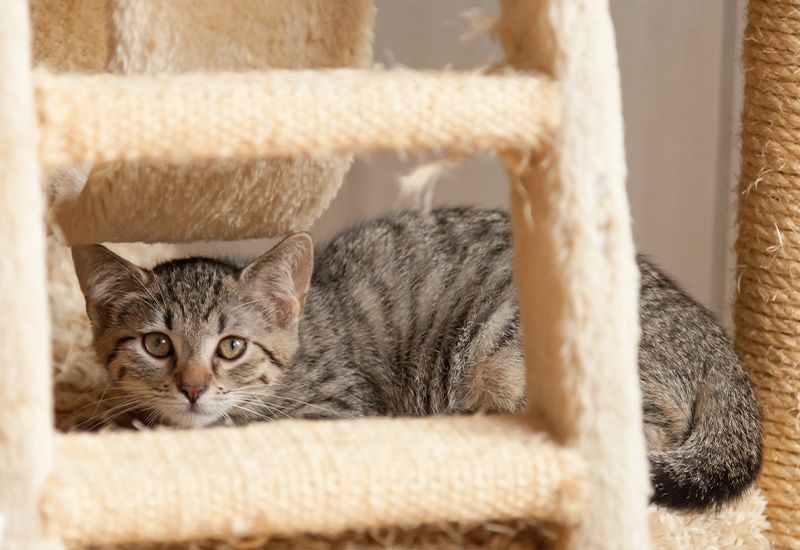
What does that entail?
You start with a technique called capturing where you’re waiting for the kitten to perform a behavior without a cue. You’re not directing the cat in any way. You’re simply observing the cat and choosing to click and reinforce when they complete a behavior that you want to see happen again. Capturing is a method that works well when you’re reinforcing behaviors that a cat does naturally. We use capturing to reinforce looking at us, coming toward us, movement toward us, slow-blinking and other relaxed behaviors.
The goal is to get the kitten to approach and stay in front of you with minimal to no signs of stress. To reach that point, you break down the behaviors into small steps.
I’ll often start by capturing eye contact: If the kitten just looks at me for a moment, I’ll toss a treat. Then I’ll start capturing any movement toward me. You can also pair capturing with a soft-sounding clicker. This teaches the kitten that they have control, they have a choice. It’s super confidence-boosting.
After a while, you can work on targeting. Don’t use your finger right away; use a target stick or pencil. When they touch their nose to the target, you click and deliver a treat. You can use it to teach other behaviors like going into a carrier or standing on scales to be weighed. You can also start play time with long, long wands, where you’re sitting down to start.
How long do you wait until you pet or pick up the kitten?
I don’t have people touch the kittens until they solicit it. If you try to pick up kittens before they’re ready, you’ve just taught them that they have no choice, and if they try to escape, people will hold them tighter. They can generalize that fear to more things.
So you want to assess the kitten’s body language for signs they’re relaxed and receptive. Then extend out a finger or a hand close to your body, and if the kitten rubs into you, that’s a request to be petted. If they sniff and walk away, don’t force the issue. Let them initiate and control the type of human contact they receive.
Once they’re comfortable with you—not just tolerating you but soliciting attention—you can introduce them to new people and things, like an umbrella or the sound of a baby crying. With every new experience, you use a patient, considerate approach.
If I’m playing the sound of a baby crying, I start at a low volume and pair it with treats and play. The cat should have little to no signs of stress before I increase the volume. You’re using classical conditioning and desensitization, and it all starts with building that relationship with you first.
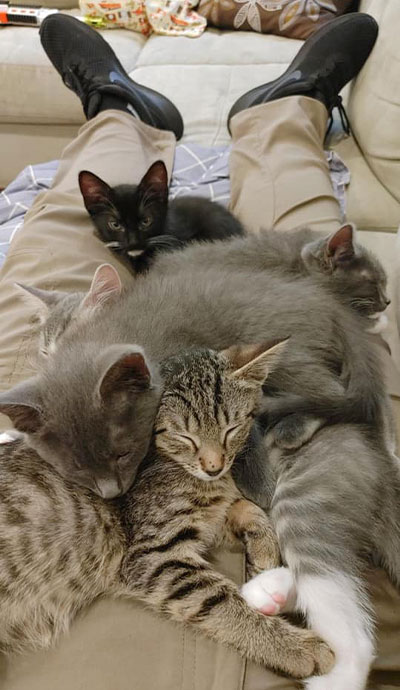
How long does it typically take for a kitten to become socialized?
Behavior is complex, and there are so many factors that contribute to an individual kitten’s behavior, such as genetics, environment and what nutrition the mother cat got when the kittens were in the womb. Even kittens from the same litter will progress at different speeds. One kitten may want to approach me in three days; another might take a week. You may have one kitten in a litter who is still working on capturing, while the other kittens are sort of social-supporting them.
People often throw out numbers on how long it should take for a kitten to reach a certain end goal; instead, we should follow the rule that “we don’t go to this step until we see this behavior in the kitten.” This gives your staff and foster volunteers direction and criteria. It sets them up for success instead of just throwing the kittens into a bathroom and winging it.
What feedback have you received from the shelters and foster caregivers who use your techniques?
It’s pretty awesome. The cats are more adoptable, getting socialized quicker, and more likely to stay in a home. The cats are happier, the volunteers are happier, and the staff are happier.


